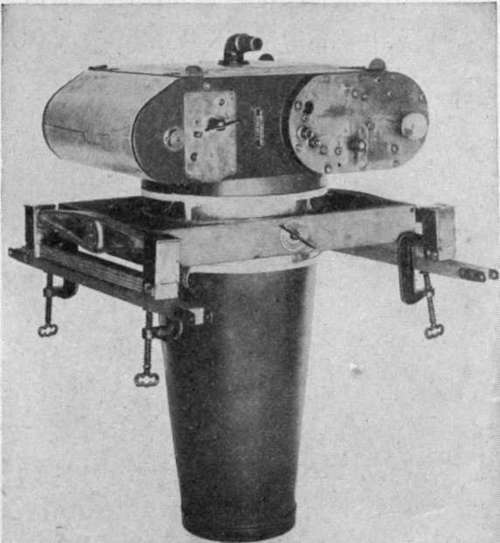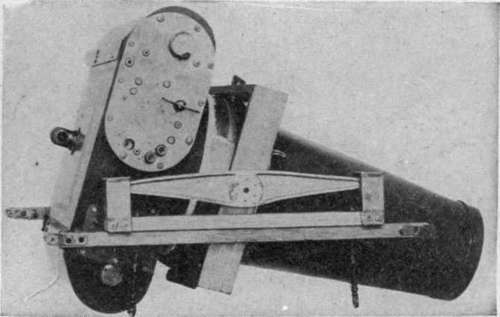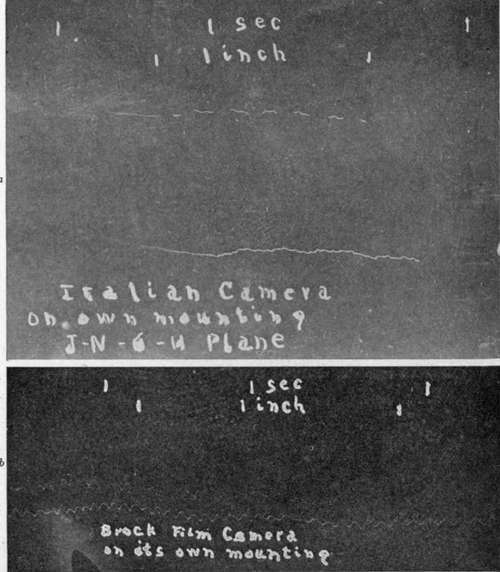Center Of Gravity Rubber Pad Supports
Description
This section is from the book "Airplane Photography", by Herbert E. Ives. Also available from Amazon: Airplane photography.
Center Of Gravity Rubber Pad Supports
Given a camera whose center of gravity does not change during operation, a simple and entirely adequate anti-vibration support is furnished by a ring of sponge rubber in the plane of the center of gravity. But if provision has to be made for oblique views or for adjusting the camera to the vertical, something more elaborate is necessary.
Mountings for the American deRam and for the Air Service film camera, embodying the results of complete study of the anti-vibration problem, are shown in Figs. 90, 92 and 93. Trusses carrying the cameras on pivots rest on four pads of sponge rubber which are mounted on frames correctly spaced ready for attachment to the cross-pieces of the airplane camera supports. In the deRam (Fig. 90) the pivots, attached to the camera body, permit it to be leveled fore and aft, to compensate for the inclined position of the fuselage assumed at high altitudes or in some conditions of loading. This will sometimes amount to as much as 11 or 12 degrees, which is very serious, since one degree causes (with an angular field of 20 degrees) about one per cent, difference of scale at the two sides of the plate. The film camera mounting carries the camera in a conical ring, and is pivoted not only for vertical adjustment, but for the taking of obliques as well (Fig. 93). These mounts transmit practically no vibration.

Fig. 92. - U. S. type "K" film camera on universal mounting, vertical position.

Fig. 93. - U. S. type "K" film camera on universal mounting, oblique position.

Fig. 94. - Tests on two types of camera mount: (a) Support at bottom of camera; (b) support above center of gravity.
A caution must be noted with regard to center of gravity mountings. Any change in the camera, in particular the substitution of a short for a long lens cone, must be made so as to cause no alteration of the relative positions of the center of support and the center of gravity. Either the short cone must be weighted, or additional supporting pivots must be provided in the plane of the new center of gravity.
Continue to:
Tags
camera, lens, airplane, aerial, film, exposure, photography, maps, birdseye
